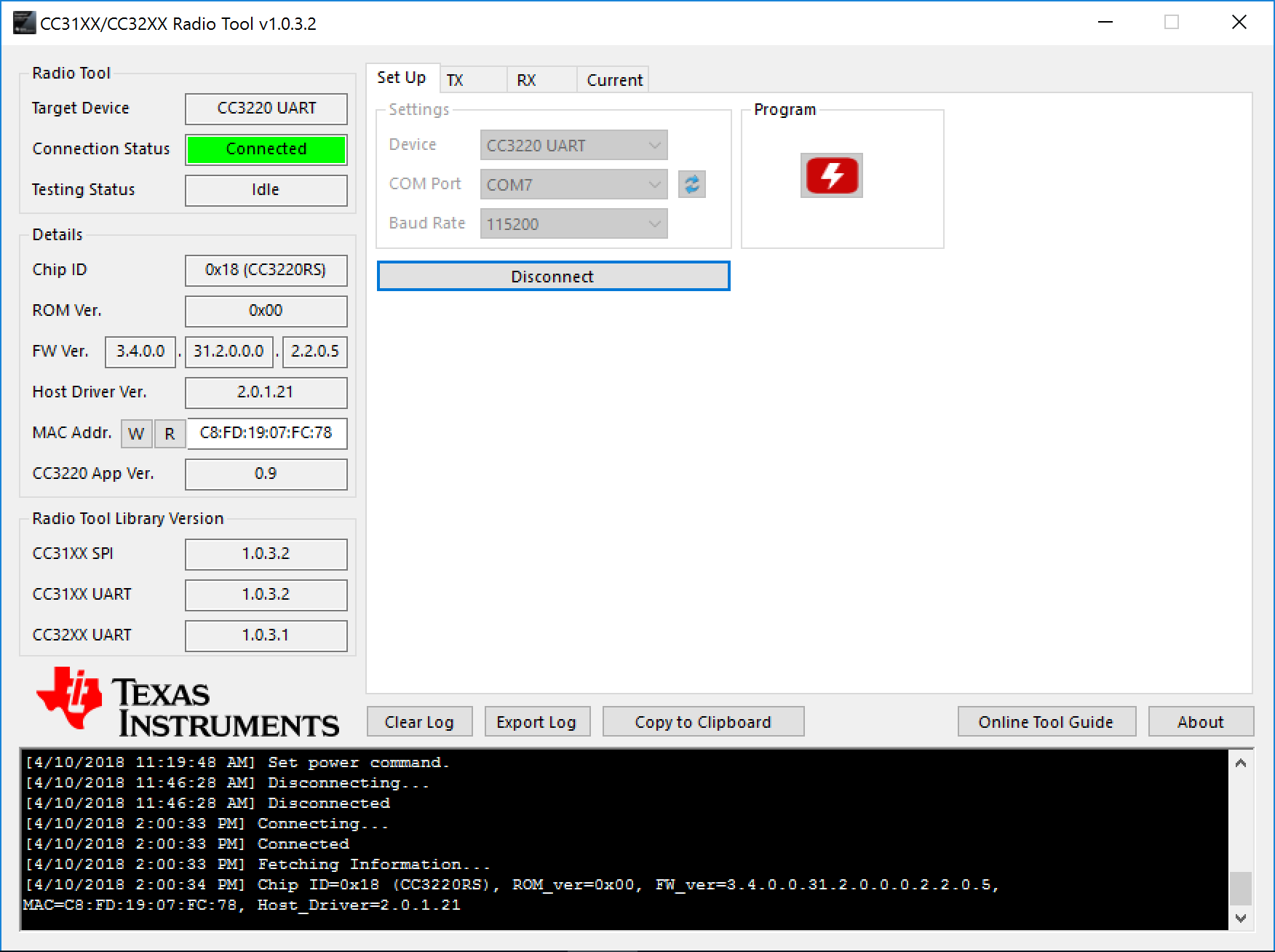SWRU556 June 2021 CC3100 , CC3200
7.1 Set Up Tab and General Information
Users have three types of devices for connection:
- CC31xx SPI
This is not recommended to use because it is limited to connecting to one CC31xx board with this protocol. If more than one CC31xx is present, CC31xx UART is the recommended connection.
- CC31xx UART
- CC32xx UART
With the UART connection type selected, users can pick from a list of known COM port and baud rates. Click on the blue spinning arrows on the right to refresh the list if the if the appropriate COM port does not appear.
Upon a successful connection, the Details box on the left provides detailed device information on the connected device (see Figure 7-1). Before proceeding, ensure the board is flashed with the desired image version.
FW Ver. (or Firmware version), is arranged as follows: <NWPversion>.<FWversion>.<PHYversion>
The CC32xx App Ver. information is applies only to CC32xx, and indicates the radio tool application version flashed onto the device.
The only supported baud rate now is 115200.
 Figure 7-1 Radio Tool Setup Page With
Connected Device
Figure 7-1 Radio Tool Setup Page With
Connected Device